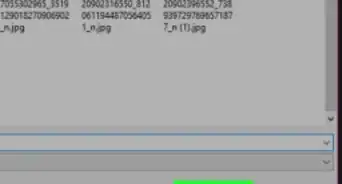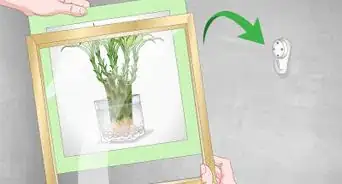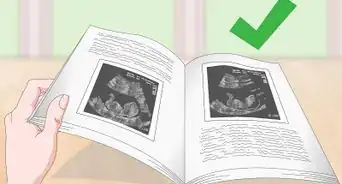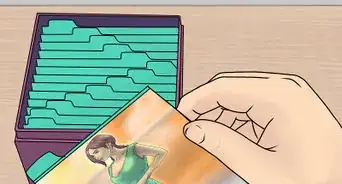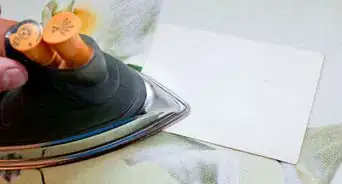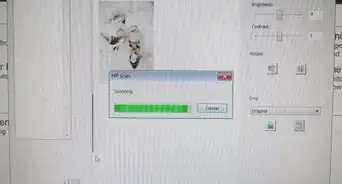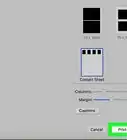This article was co-authored by Giselle Baumet. Giselle Baumet is a Mindset & Wellness Coach and the Owner of Granola Babies based in Orange County, California. With more than 16 years of experience, she specializes in helping others, particularly parents, navigate through life’s challenges. Giselle earned a BS from Rhode Island College and a Lactation Educator Certification from The University of San Diego. She also holds a Women’s Life Coach Certification from The Academy of Creative Coaching, a Transpersonal Hypnotherapist and Somatic Healer Certification from The Transpersonal Hypnotherapy Institute, a Hypnosis and Childbirth Certification from The American Hypnosis Association, and a Positive Parenting Educator Certification from Positive Discipline.
wikiHow marks an article as reader-approved once it receives enough positive feedback. In this case, several readers have written to tell us that this article was helpful to them, earning it our reader-approved status.
This article has been viewed 88,179 times.
As their name suggests, memory books are collections of personal memories put together by one or more individuals. They can have many themes, from remembering special events to recording a set of a baby's "firsts" to celebrating the life of a particular person. Memory books are typically physical and styled like a scrapbook. However, with digital scrapbooking and custom printing services becoming more common, digital memory books are gaining in popularity.
Steps
Knowing What You Want to Make
-
1Pick a theme. Whether you're making a physical or digital memory book, the first thing you need to do is decide what you want your book to be about. Common memory book themes include:
- Family members – Make a book about a specific loved one. In addition to photographs, you can also include things he or she wrote (like letters and postcards), drew (like pictures your child has made), or anything else that is flat enough to fit inside a book or to be scanned into a computer. You can also include documents associated with this person, such as a report card, a copy of a birth certificate or marriage license, or a birthday card he or she received. If your child is young, you can start a memory book now and add to it as he or she grows up.
- Events – Weddings, birthdays, bar/bat mitzvahs, quinceañeras, graduations, and anniversaries are all popular choices when making a memory book. Holidays, like Christmas or Valentine's Day, are also common themes. If the event or special day happens annually, you can add a new page or chapter each year.
- Vacations – Use your memory book to relive a fun vacation or share it with others. This is an especially good idea if you went to an exotic location and took a lot of pictures. You can also include things like your plane ticket stubs or even a pressed flower you brought home with you. If this is an annual family vacation, consider adding a new chapter each year. You can put every chapter in the same book or a different one per year.
- More specific combinations – This option is especially popular for parents making a book of their child or children. They can be about one specific event, such as "Duane & Derrick's First Halloween," or one that covers a longer period of time, such as "Melissa's First Year of School" or "Becky's Birthdays from Six Through Ten."
-
2Decide on the content. There aren't many rules for what you can include in a memory book. Just make sure whatever you add fits your chosen theme and, if you're making a physical memory book, make sure that all of your items are relatively flat and can be attached to the pages with ease.
- Physical memory books often include photographs, illustrations, poetry, quotations, ticket stubs, greeting cards, programs, postcards, stickers, and even small mementos like coins or tokens. Each item is often paired with a written explanation for its context.
- In addition to photographs and other scannable documents, digital memory books can also feature sound and video.
- Remember that a memory book is different from a general photo album. Don't include every related photo you've shot. Instead, choose only a handful that tell a story.
Advertisement -
3Ask people to contribute. Many memory books are made through collaboration. Consider asking other people to help make your memory book. They can help by either making a particular page or chapter or by simply submitting photos and other items they may have.
Making a Physical Memory Book
-
1Pick the right book. The book itself will be the foundation of your memory book, so choose wisely. Any type of notebook will do, as long as it contains acid-free paper.
- In general, scrapbooks work best. These can be found in most general, stationery, grocery, craft, and even convenience stores.
- If you plan on creating your memory book over time, consider picking a type of notebook where extra pages can be added as needed. Some scrapbooking albums allow you to attach new cardstock pages, while you can also always easily add new pages to a "book" made from a simple three-ring binder.
- Many retailers, such as bookstores and hobby shops, sell ready-made memory books for particular occasions. These memory books typically contain fill-in-the-blank text and places to put your photos. They may be a good choice when making your first memory book if you are uncertain of how to format it.
-
2Gather your materials. Once you have your book ready, you'll need things to put in it. Gather together all photographs and other elements you'd like to put in your book. The only other materials you must have are a pen and adhesive.
- Your adhesive may be any type of glue or tape. Make sure whatever you use is acid-free. Archival glues meant for books and paper projects will produce the best results. However, a simple glue stick will also work.
- You may also choose to include small items related to your book's theme.
- You may want to decorate your memory book with embellishments. These decorations may be directly related to your book's theme or content, such as die-cut snowflakes for a book about winter or pumpkin stickers for a Halloween chapter. You may also use purely decorative embellishments, such as glitter and rhinestones, that may not strictly match your book's theme.
-
3Sketch a layout. Once you have everything in one place, it may help you to sketch a layout or arrange your items before actually attaching them to the page. It's a good idea to figure out a layout before you glue your items permanently in place.
- You may choose to arrange elements items in any way you think looks nice.
- A common format for store-bought memory books is to include a place for a photograph on one page and fill-in-the-blank text on the page opposite.
- Include large embellishments when determining your layout.
-
4Crop your photos. Instead of using uncropped rectangular photographs, you may want to crop them into other shapes. This will help your memory book to have a more interesting, cohesive feel.
- Crop photos for shape. You may choose to trim a photo so that it better fits in your page's layout. Thematic shapes, such as a heart for Valentine's Day, are another cropping option.
- Crop photos for content. If a photo includes certain aspects that don't fit with your memory book, see if you can trim them away. For example, a picture of your friend at the beach may be cropped to remove strangers
- Use a pair of sharp scissors to get crisp edges.
- Cropping may be done before the layout step if you are planning to crop a photo a certain way regardless of page design.
-
5Attach your items. For most of your elements, you will likely use some form of acid-free glue. Simply spread a thin layer of adhesive on the back of each item and stick it in place. Use your fingers to smooth each piece flat and wait for each page to dry before turning to the next one.
- Some three dimensional objects may require a different type of adhesive. Double-sided sticky tape or scotch tape may be good alternatives.
- If your memory book pages are thick enough, you can sew items onto the paper.
- Because different glues can have very different set times, check your particular glue's packaging for how long they should take to dry.
-
6Write about your items. Describe your pictures and other elements. Explain what they depict and/or why they are important. These can be simple words (like "Grandma Rose, September 28, 2015"), phrases ("This was dad's favorite song."), sentences, or even whole paragraphs. You don't need to write a caption for each item, but it helps to flesh out your memory book and distinguish it from a photo album.
- If you are including poems, lyrics, or quotations, you may also choose to handwrite them instead of using a clipping or print-out.
- If you are working with a pre-made memory book, simply fill in the blank spaces where appropriate. You may also choose to write more in the margins.
-
7Decorate your memory book. Add any finishing touches to embellish your book's content. This is the time to add things like glitter, smaller stickers, stamps, and ornamental designs. Try to use your embellishments to reduce the amount of blank space.
- If your memory book tells a story, lay them out in a way that draws the reader's eye across the page to each item in the correct chronological order. A simple trick for this is to connect each item in the desired order with a line or ribbon between them.[1]
- Once you've finished decorating, your memory book is ready to share.
Designing a Digital Memory Book
-
1Find a template or program you like. Search the web for resources for digital memory books and scrapbooking. You have a couple general options when it comes to digital memory books:
- Websites that allow you to put together your memory book for display online. These sites act as aggregators where you can add and arrange digital content into virtual albums. Some of these websites focus only on pictures and their captions, while others allow you to also share stand-alone text, videos, audio, and URLs. You can either upload your own content or add content already on the web to your digital memory book.
- Programs, templates, and websites for building a more traditional memory book which may be published later as physical hard copies. These will allow you to select a size and format for your memory book and arrange pictures and text onto each page just as you would a traditional memory book. They are often paired with an integrated print service that will allow you to order a printed, professionally-bound copy of your book.[2] Even if you decide to keep your book digital, these services can be used to create shareable files.
-
2Ready your content. Scan or download all elements you plan on including in your digital scrapbook. Make sure to optimize your content for your platform of choice.
- If you intend on printing out your book, remember to scan and save your images and pages at 300 DPI (dots per inch) at minimum. Save as a TIFF for perfect image quality.
- If you intend to keep your book entirely digital or publish on the web, compressing images to lower their file size is likely appropriate. JPEGs are generally good for photos but often introduce artifacts. GIFs are more appropriate for text or simple art but are limited to 256 colors and don't work well with photos.
- PNG-formatted images can be of good enough quality for print while not being too big for the web.[3] With modern high speed Internet and large hard drives able to handle larger files, this format is becoming more common.
- Some digital memory book programs have their own built-in image editors. However, you will likely need to touch up your pictures with an image editor before importing them. Adjust contrast and brightness and correct colors as necessary. Crop your pictures digitally just as you would with scissors.
-
3Pick a consistent style. Although not entirely necessary, choosing and sticking to a font (or set of fonts) and color scheme for use throughout your book will give it a much more professional look. You can use text with multiple fonts, colors, and sizes in the same project as long as long as each is used for a different purpose. For example, you could use large all caps purple lettering for titles with smaller black text for your captions.
- Pick colors that match your theme. For example, a memory book of your college years may use your school's colors.
-
4Design your memory book. If you're using a template, allow it or your software to guide you through the process, adding text and pictures where necessary. If you are creating your memory book free-form, it will be up to you to decide how each page should look. Just remember that memory books should include both pictures and text. Use picture captions to tell a story.
-
5Share your memory book. If you want professionally bound digital hard copies of your memory book, either use your software's printing service or find one online that's compatible. You can also choose to do an inexpensive version of this at home by printing out your pages and assembling them in a notebook or with binder clips. You may also choose to store your book onto disks or flash drives to share with others. If the file is small enough, you can even simply email the file out. If you're using an online scrapbooking tool, make sure your privacy settings allow it to be viewable and share the link to you page.
Expert Q&A
-
QuestionWhat do you put in a homemade baby book?
 Giselle BaumetGiselle Baumet is a Mindset & Wellness Coach and the Owner of Granola Babies based in Orange County, California. With more than 16 years of experience, she specializes in helping others, particularly parents, navigate through life’s challenges. Giselle earned a BS from Rhode Island College and a Lactation Educator Certification from The University of San Diego. She also holds a Women’s Life Coach Certification from The Academy of Creative Coaching, a Transpersonal Hypnotherapist and Somatic Healer Certification from The Transpersonal Hypnotherapy Institute, a Hypnosis and Childbirth Certification from The American Hypnosis Association, and a Positive Parenting Educator Certification from Positive Discipline.
Giselle BaumetGiselle Baumet is a Mindset & Wellness Coach and the Owner of Granola Babies based in Orange County, California. With more than 16 years of experience, she specializes in helping others, particularly parents, navigate through life’s challenges. Giselle earned a BS from Rhode Island College and a Lactation Educator Certification from The University of San Diego. She also holds a Women’s Life Coach Certification from The Academy of Creative Coaching, a Transpersonal Hypnotherapist and Somatic Healer Certification from The Transpersonal Hypnotherapy Institute, a Hypnosis and Childbirth Certification from The American Hypnosis Association, and a Positive Parenting Educator Certification from Positive Discipline.
Mindset & Wellness Coach I suggest you take a few minutes each month during the first year to write a description of your baby. When writing, include how your baby sleeps, how much your baby eats, their emerging personality, favorite things, and what you love about your baby. Think about the little things that later your baby might enjoy knowing about themselves as they grow up.
I suggest you take a few minutes each month during the first year to write a description of your baby. When writing, include how your baby sleeps, how much your baby eats, their emerging personality, favorite things, and what you love about your baby. Think about the little things that later your baby might enjoy knowing about themselves as they grow up. -
QuestionI want a book cover that is fluffy and that doesn't have a theme. It will just be a book with memories and pieces of writing that people have written to remember in the future. What can I do?
 Community AnswerYou can buy some fluffy fabric and glue to the book you are using. You can even buy drawing blocks with fluffy covers online. If you buy drawing blocks, you can stick all kinds of pictures and ask people to sign it.
Community AnswerYou can buy some fluffy fabric and glue to the book you are using. You can even buy drawing blocks with fluffy covers online. If you buy drawing blocks, you can stick all kinds of pictures and ask people to sign it.
References
About This Article
To make a memory book, pick a theme, like a book all about your family, your wedding, or a vacation you took. On each page of the book, tape or glue a photograph or another item that ties into your theme, along with a written explanation for why that item is significant. You could include ticket stubs, drawings, quotations, stickers, greeting cards, or anything else that you can easily attach to paper. Remember, the book will be unique to you, so feel free to design it however you want! Read on to learn how to make a digital memory book!
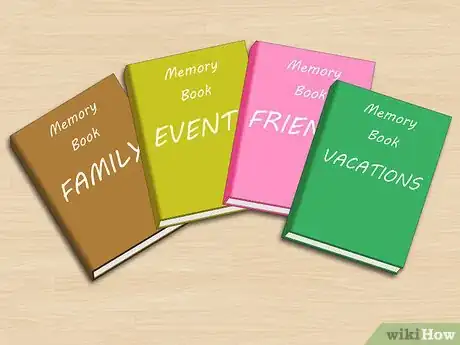
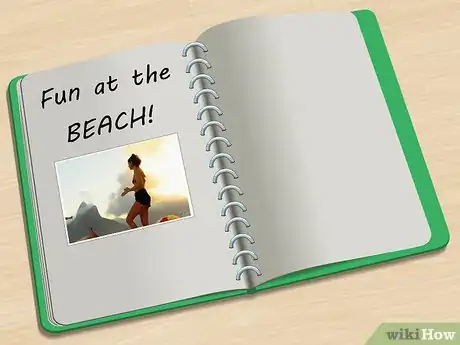
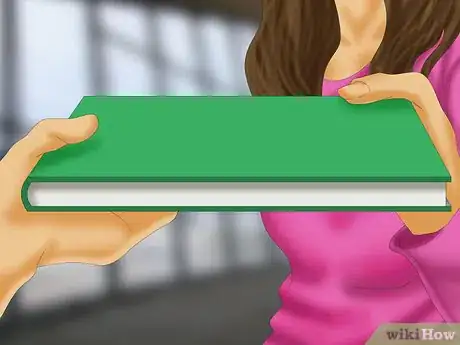
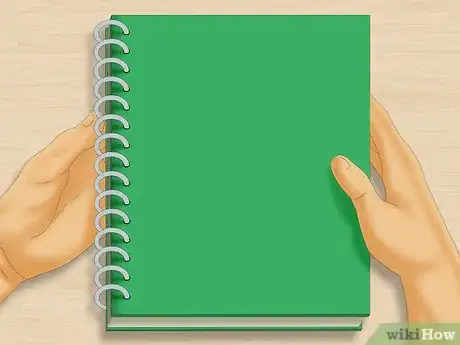
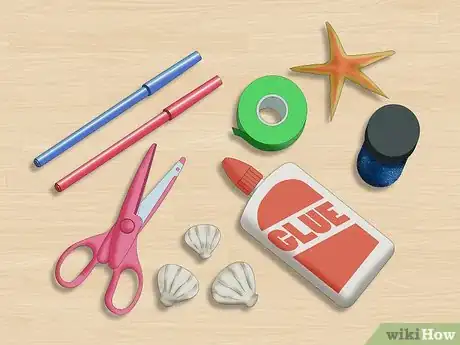
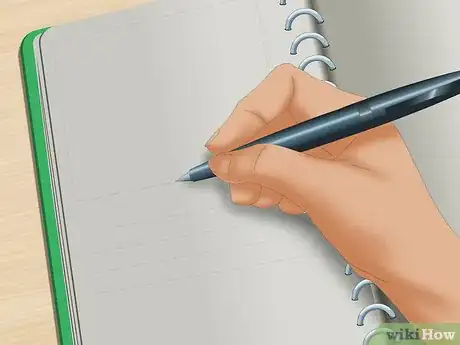
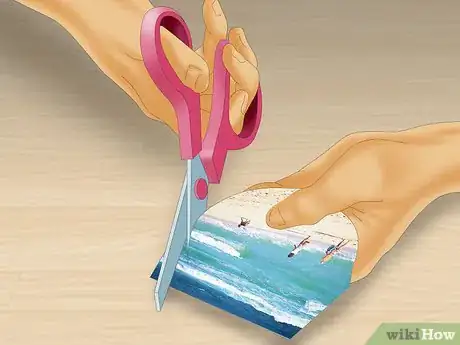
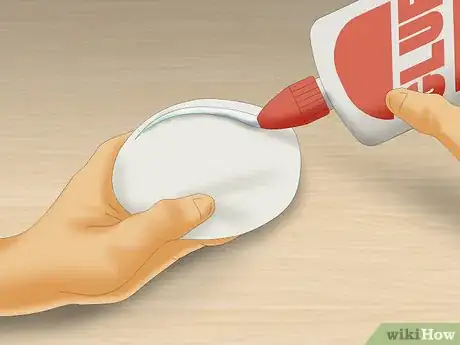

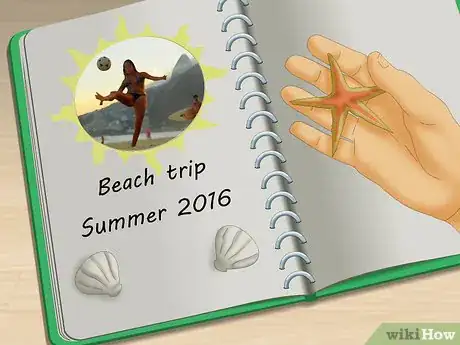
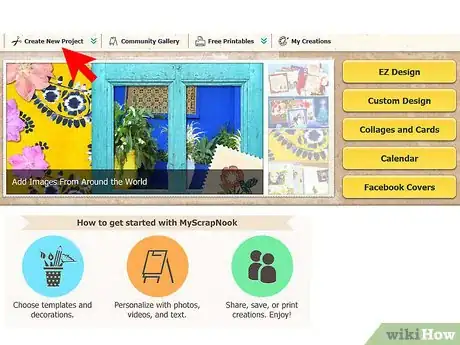

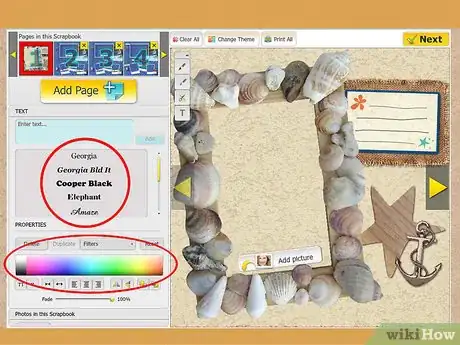
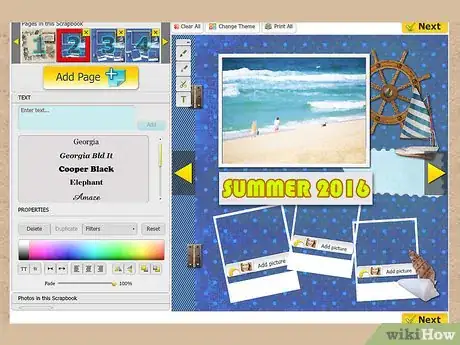
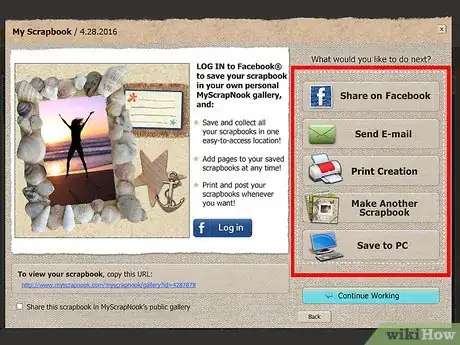
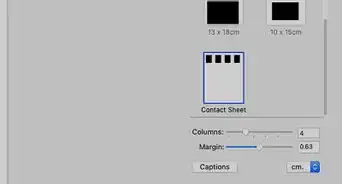

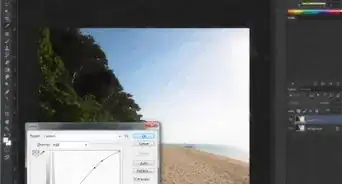
-Step-53.webp)
